QMP3Gain: Volume Normalizer Front-End For MP3Gain With Batch Support
Isn’t it quite cumbersome to fiddle with the volume slider every time a new song is played? Some tracks are in deafening high volume, while others hardly reach our ears. If you have been looking for a way to normalize the sound across a number of soundtracks, and that, too, without any loss in quality, then QMP3Gain is probably what you need. It’s an open source application that provides front end for MP3Gain engine, a robust volume normalization engine that losslessly adjusts the volume across all the selected tracks – particularly effective in normalizing a whole album. Most volume normalizers gain boost in volumes via peak normalization; contrary to the norm, MP3Gain engine does statistical analysis of the file and makes adjustments without re-encoding.
The interface of the application looks simple and is pretty much self-explanatory. Hovering the mouse pointer on the toolbar buttons provides a mini description of the underlying function. The tool supports batch normalization, which means you may save a lot of time by selecting multiple files in one go. The usage is quite simple as well. First off, select your target volume in dB and add your MP3 files.
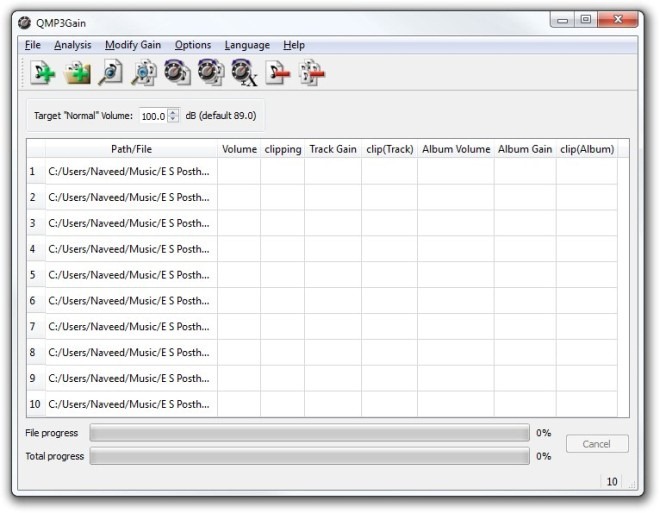
After that, click Track Analysis and Album Analysis on the toolbar (or under Analysis menu) back to back, depending on the type of volume normalization you want.
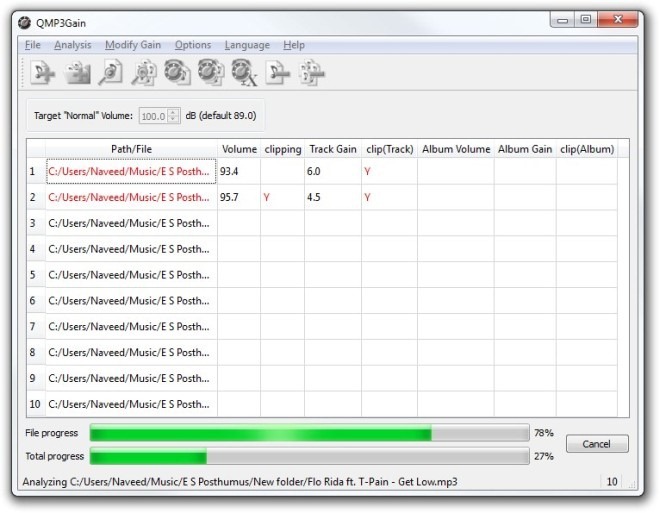
Upon completion, the application displays the result of analysis and lets you know about the amount of room available for gain, after the normalization process. For instance, Volume displays the original decibels of the selected tracks, while Track Gain is the difference between actual volume and gain volume. The tool also lets you know about audio clipping. Clipping refers to the distortion in sound that occurs if an amplifier is overstepped, so it’s more effective to avoid it if you want less sound noise. The tool displays the statistical data of tracks for both individual and album gain.
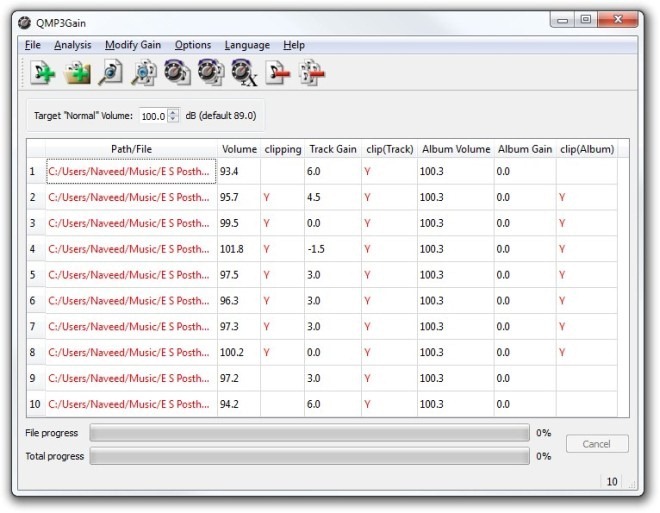
The application also has an Options menu which houses various parameters, which, if used, should be applied before the sound gain, since the tool overwrites the original file. For instance, you may preserve date and time amidst the gain process, avoid clipping, or avert Layer I or II check. Other configurations in Options are rather there for aesthetics purposes. Once you have configured the settings, simply select gain type (Track Gain, Album Gain, Constant Gain) from Modify Gain menu to employ the effect.
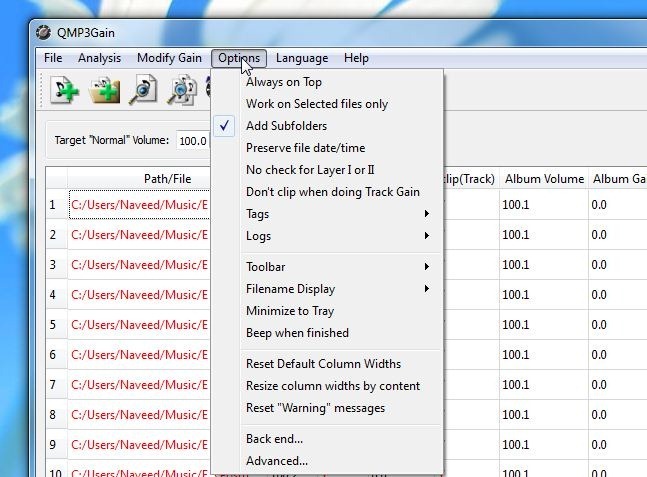
Should you want a unified amount of gain for all tracks, try selecting constant gain. Constant gain also lets you select individual audio channels wave (left or right) where seemingly the volume gain is required.
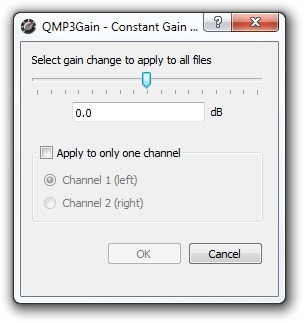
Overall, QMP3Gain is a feature-rich application with simple and easy to use UI. It works on Windows XP, Windows Vista, Windows 7 and Windows 8.

I’m agreeing with Gregg here. Normalize? Or Level. I know you mean
LEVEL. Gregg does not seem to. The example is PROBABLY VERY BAD. I never
use 100dB, because that would *always* clip. With my current
collection, I went down to 83dB, and that’s just for the a-cappella. I’m
putting instrumental tracks into the same mix at 80dB, because they
sound louder.
Volume normalization is a two-edged sword. On one hand, it’s very cool to use when songs from different artists and CDs are mixed together in one file folder, and played as a playlist. In cases where one song is software than the others because it was simply recorded more softly (or vice versa: one song is too loud), then the too-loud or too-soft song can be leveled (or “normalized”) to be the same as all others in the folder.
However, the downside is that some volume normalizers don’t upwardly or downwardly adjust the volume of a song based on average its highs and lows across the entire song (which is the way it should be done). Instead, the “normalize” by clipping the peak louds and softs, throughout the song…
…and that makes for downright unlistenable music. Moreover, just as CNN’s founder Ted Turner was way out of line when he tried to colorize beautiful old black-and-white movies (because many of them were black-and-white on purpose, and so that they were black-and-white was the director’s art), so, too, is any normalizer out of line when it clips the peak loudness and softness spikes in any song. Such spikes are deliberate… part of the art. And so clipping them robs the song of its dynamics; and, if done technologically poorly, also causes a sort of “beat back” (as opposed to “back beat”… a completely different thing) effect that’s hard for me to describe, but I know it when I hear it.
Volume normalizers should figure out the average loudness of a song, across the entire song, and then raise or lower the volume of all parts of the song absolutely equally so that even after the song is either louder or softer than all others in the same folder, its spikes of volume highs and lows remain, relative to one another, exactly the same.
I would caution, then, anyone from using volume normalizers, just generally; and if one does use them, then one should determine by which means they normalize. If the volume normalizer doesnn’t figure out the average volume level, across the entire song, and then either raise or lower the entire song’s volume based on that, leaving all dynamics intact, then all it will do is ruin said song… make it positively unlistenable.
Volume normalizers, generally speaking, are a bad idea. If the product(s) written about in this article normalize correctly (or at least contain an option which allows for the correct way; said correct way being as I just described in the immediatelly-previous paragraph), then that’s excellent! But if not, then I could not more strongly recommend against using it.
Just my $.02 worth… which, it’s worthy of note, my ex-wife will attest tends to be about ALL it’s worth.
___________________________
Gregg L. DesElms
Napa, California USA
gregg at greggdeselms dot com